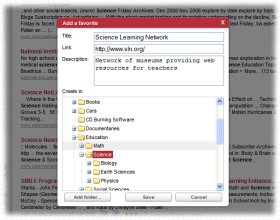|
Education
Web
Viewing 1-1 of 1 total results
identify implicit and explicit assumptions that have been made. In exploring minimum spanning tree situations students devise, analyze, and apply algorithms as they adopt strategies to confront the problem. Such strategies can lead to Kruskal’s algorithm, Prim’s algorithm,...
1
0
identify implicit and explicit assumptions that have been made. In exploring minimum spanning tree situations students devise, analyze, and apply algorithms as they adopt strategies to confront the problem. Such strategies can lead to Kruskal’s algorithm, Prim’s algorithm, or the “nearest neighbor” algorithm. Example: • Susan is a city planner in charge of the development of roads for a recreational area. The graph shows locations in the area, the possible roads that could be built between locations
15
0
http://www.ade.state.az.us/standards/math/Articulated08/Gradeleveldocs/MathGradeCWR.pdf#page=15
www.ade.state.az.us/standards/math/Articulated08/Gradeleveldocs/MathGrade...
identify implicit and explicit assumptions that have been made. In exploring minimum spanning tree situations students devise, analyze, and apply algorithms as they adopt strategies to confront the problem. Such strategies can lead to Kruskal’s <span class="highlight">algorithm</span>, Prim’s <span class="highlight">algorithm</span>, or the “nearest neighbor” <span class="highlight">algorithm</span>. Example: • Susan is a city planner in charge of the development of roads <span class="highlight">for</span> a recreational area. The graph shows locations in the area, the possible roads that could be built between locations
33
0
http://www.ade.state.az.us/standards/math/Articulated08/Gradeleveldocs/MathGradeCWR.pdf#page=33
www.ade.state.az.us/standards/math/Articulated08/Gradeleveldocs/MathGrade...
place <span class="highlight">for</span> the development of students' reasoning, higher thinking, and justification skills culminating in work with proofs. Geometric modeling and spatial reasoning offer ways to interpret and describe physical environments and can be important tools in problem solving. Students use geometric methods, properties and relationships, transformations, and coordinate geometry as a means to recognize, draw, describe, connect, analyze, and measure shapes and representations in the physical world. Measurement is
|
